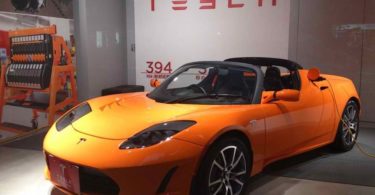Millionaires will be minted OVERNIGHT
Sponsored
Legendary tech futurist who predicted the rise of Amazon, Netflix, and Apple YEARS in advance now says: “The biggest, most profitable technological advances in the future will ALL stem from this single breakthrough. Millionaires will be minted overnight.” He's revealing EVERYTHING here.
The sagas of knowledge and power continue to deform the topology of the world.
In 2012, George authored a book entitled Knowledge & Power, expounding the “Information Theory of Economics.” Consummated in my new book, “Life After Capitalism” (2023), it espoused the unpopular view that knowledge has no nations, and ultimately dominates the preferences of power. Physical correctness prevails against political correctness regardless of time or place.
In 2015, a Dutch-born physicist, Walter de Heer, a PhD at UC Berkeley, researcher at the Lausanne Institute in Switzerland and now Regents Professor of Physics at the Georgia Institute of Technology, committed a dire offense against the prevailing rules of physical correctness.
Pioneering a “new phase of matter” in two-dimensional carbon molecules, summoning ultra-relativistic “Majorana Fermions” on a graphene lattice, he confronted a political move into physics comparable to the edicts of Soviet scientist Trofim Lysenko against the then-new sciences of Mendelian genetics, DNA and biotech.
In the Leninist era, Lysenko asserted that the rules of Marxian materialist doctrine and Soviet empire must overrule the discoveries of western geneticists. In Washington, there arise more muddled moves to nationalize the global fabric of creativity in electronics and materials science in some kind of deranged “war” over microchip technology.
As Director of the Epitaxial Graphene Interdisciplinary Research Group at Georgia Tech, de Heer espouses the paradoxical new findings of “condensed matter physics.” This efflorescent field enables scores of new materials that behave in ways previously regarded as violations of physical law. In a new kind of physics elaborating and transcending the century-old doctrines of quantum theory, de Heer became a pioneer in the science of “topology.”
Topology recognizes factors of place and space, but always exalts knowledge over power. De Heer knew scientific discoveries in the field emerge from human genius and entrepreneurial science wherever it may emerge rather than from nationalist missiles and omertas. This lesson is inexorable and manifests itself repeatedly, from the time of the Manhattan Project when Hitler attempted to nationalize nuclear physics (no Jews allowed) to our current attempts to nationalize microchip physics.
Topology is a discipline that focuses on global effects that are not locally evident, such as deformations that do not affect a physical process. An island can be deformed radically and remain an island, doggedly insular, surrounded by water, until the point that it becomes a peninsula. A mere bridge may change everything.
Similarly, a “band gap” between the electrical conduction band and chemical valence band of molecules can protect physical processes despite major deformations of the material. Deformation can flourish until the point that the band gap closes at a “Dirac point” and the material becomes a conductor.
More familiarly, we know that light speeds along at an ultimate velocity of 300 million meters a second regardless of the shape of its path, and we know the laws of physics remain the same in Atlanta, Georgia, and Tianjin, China.
In certain Washington quarters, however, physics between Atlanta and Tianjin becomes fraught with political deformations, to the extent that scientific exchanges hit a hypersensitive Dirac point and became close to treason. Politicians are increasingly pressuring the U.S. government to treat intercourse in physics as a crime.
Nonetheless, in previous decades—coincidentally almost since the day in 1971 that Richard Nixon and Henry Kissinger opened new frontiers of relations between the United States and China—de Heer found scant support in America for a two-decade-long effort to inscribe electronic circuitry on graphene films that were “epitaxially” grown on silicon carbide wafers. In 2011, a team at IBM in Yorktown Heights led by Keith Jenkins achieved momentous advances on the de Heer agenda but backing dwindled in the face of obstacles and distractions.
Finally, in 2015, de Heer achieved a breakthrough. Working with his former post-doctoral assistant at Georgia Tech, Lei Ma, the Dutch researcher helped to establish the Tianjin International Center for Nanoparticles and Nanosystems (TICNN) at China’s oldest University, Tianjin. De Heer served as institute director, until 2020, when U.S. hostility to collaborative research with the Chinese in the COVID era of Xi Jinping forced him to surrender that post.
Fortunately for the world, and despite considerable obstacles and inconveniences, De Heer was able to continue his collaboration remotely as an advisor.
Fortunately for the world, early in January, De Heer and his colleagues from both Georgia Tech and Tianjin published what may well prove one of the paramount discoveries in the history of microelectronics (which, in part, thanks to their discovery, will become nano-electronics). This paper, coauthored by Chinese, American and Dutch! scholars, and published in Nature, signifies laboratory breakthroughs that will ultimately change the world as much as Intel’s 1971 invention of the microprocessor. It will be hailed as the beginning of the end of the silicon era and a herald of the age of graphene.
Graphene, a two-dimensional (single atom thick) layer of carbon is radically superior to silicon in thermal and electrical conductivity, flexibility, optical bandwidth and sensitivity, tensile strength and carrier speed. Electrons on the edges of a graphene sheet travel at a million meters a second, one three hundredth lightspeed. “Spin protected,” they move with no backscattering.
By contrast, you may imagine, as I did, that copper is a fast conductor. But in the paradoxical topology of conventional 3D copper, electrons constantly bump into each other. They interfere with each other so much that they travel thousands of times more sluggishly than in graphene. This slowdown comes despite the amazing fact that electron density is orders of magnitude lower in copper.
Graphene has long been envied by semiconductor researchers for its potential to yield transistors a thousand times faster than today while generating a diminutive fraction of the heat. With the dismantling of refrigerator towers and other thermodynamic contraptions, the graphene transistor could make today’s giant centralized data centers cool and small again.
Except for one critical problem. Graphene is not a semiconductor. As an always-on near superconductor, it cannot readily be made to switch on and off, one and zero, the essential function of a transistor.
That, along with several other showstoppers is the problem De Heer and his Chinese colleagues have solved. By summoning graphene in an “epitaxial” layer (with defined orientation relative to a material pattern below) from a silicon carbide substrate, the team created a semiconductor. This means it could switch on and off while retaining graphene’s extraordinary advantages over silicon. The feat entailed heating the SiC in a controlled process in a quartz tube until the silicon was sublimated (emitted as a gas) from the top of the substrate. The result was a perfect graphene semiconducting film with covalent bonds (super-strong links) into the silicon carbide.
As a popular material in power electronics for such applications as electrical vehicles and engines, silicon carbide is manufactured in volume in many waferfabs around the globe. With setbacks on the EV front, silicon carbide currently even faces a glut. Now, still near the top of its predictable learning curve, silicon carbide is just five times more costly than silicon. That may sound prohibitive until you realize that SiC, with de Heer’s process, promises to yield wafer-scale graphene sheets with features thousands of times, or orders of magnitude, superior to silicon.
We have long been warning of the end of Moore’s Law of transistor densities doubling every two years, with alarms of a heat crisis afflicting all the giant data centers of the world. Most of the power at wafer fabs now is devoted to dispelling heat rather than distilling nanofeatures. Graphene promises to banish the silicon heat crisis, the density impasse, and the rising complexities of the three-dimensional buildup of new transistor structures growing “fins” and gate-towers on silicon.
De Heer has been working toward this goal for more than 20 years, well before Andrei Geim and Kosta Novelosov’s Nobel-Prize-winning “discovery” of graphene. During this time, he failed to gain support from American industry for his graphene on silicon carbide insights. Critical to his eventual success was a sabbatical that led to his professorial appointment and directorship of the new institute at Tianjin, where he spent some two years and gained an investment of $10 million and a number of enthusiastic Chinese collaborators.
As de Heer explains, “graphene’s power lies in its flat, two-dimensional structure that is held together by the strongest chemical bonds known.” As such “it was clear from the beginning that graphene can be miniaturized to a far greater extent than silicon — enabling much smaller devices, while operating at higher speeds and producing much less heat. This means that, in principle, more devices can be packed on a single chip of graphene than with silicon.”
De Heer warns that between “in principle” and “in production” may loom another decade of development. Still, a great advantage for the graphene on silicon carbide (SiC) chip is that silicon carbide microchips, crucial to high-voltage power control applications in, for instance, electric cars, are already produced by the tens of millions today. Silicon carbide devices use the same essential processes used to make classic silicon chips.
In the Gilder’s Technology Report and our sister publications Gilder’s Moonshots and Gilder’s Private Reserve, we explore the collective trillion-dollar investment horizons opening through the onset of the graphene age.
But the rule of investment, as well as the science of knowledge and power, ordains that we can only keep what we give away.
The authors of the Jan. 3 paper in Nature were: Jian Zhao, Peixun Ji, Yaqi Li, Rui Li, Kaiming Zhang, Hao Tian, Kaichen Yu, Boyue Bian, Luzhen Hao, Xue Xiao, Will Griffin, Noel Dudeck, Ramiro Moro, Lei Mal, and Walt A. de Heerl.*
What is Elon really planning?
Sponsored
What the heck is Elon planning? Twitter has been an absolute dumpster fire… And we still don't have fully self-driving cars. But did one man just finally connect the dots? He says “Elon's Endgame” has nothing to do with social media or even electric cars… And points three groundbreaking patents as proof.
Billionaire VC Chamath Palihapitiya agrees, saying… “This is no longer about cars… [This] is worth trillions of dollars.” Click here to get the details now before it's too late.








